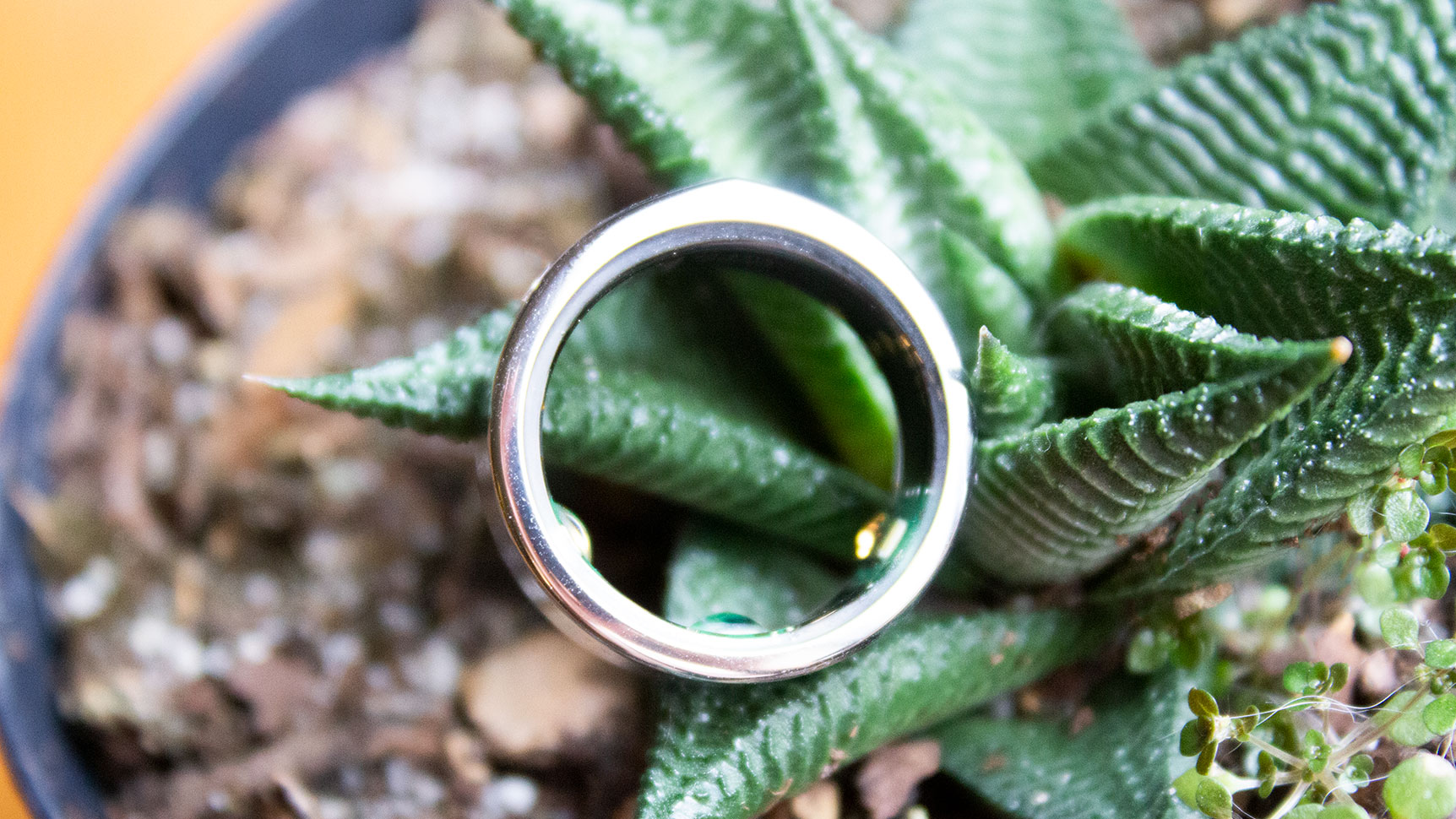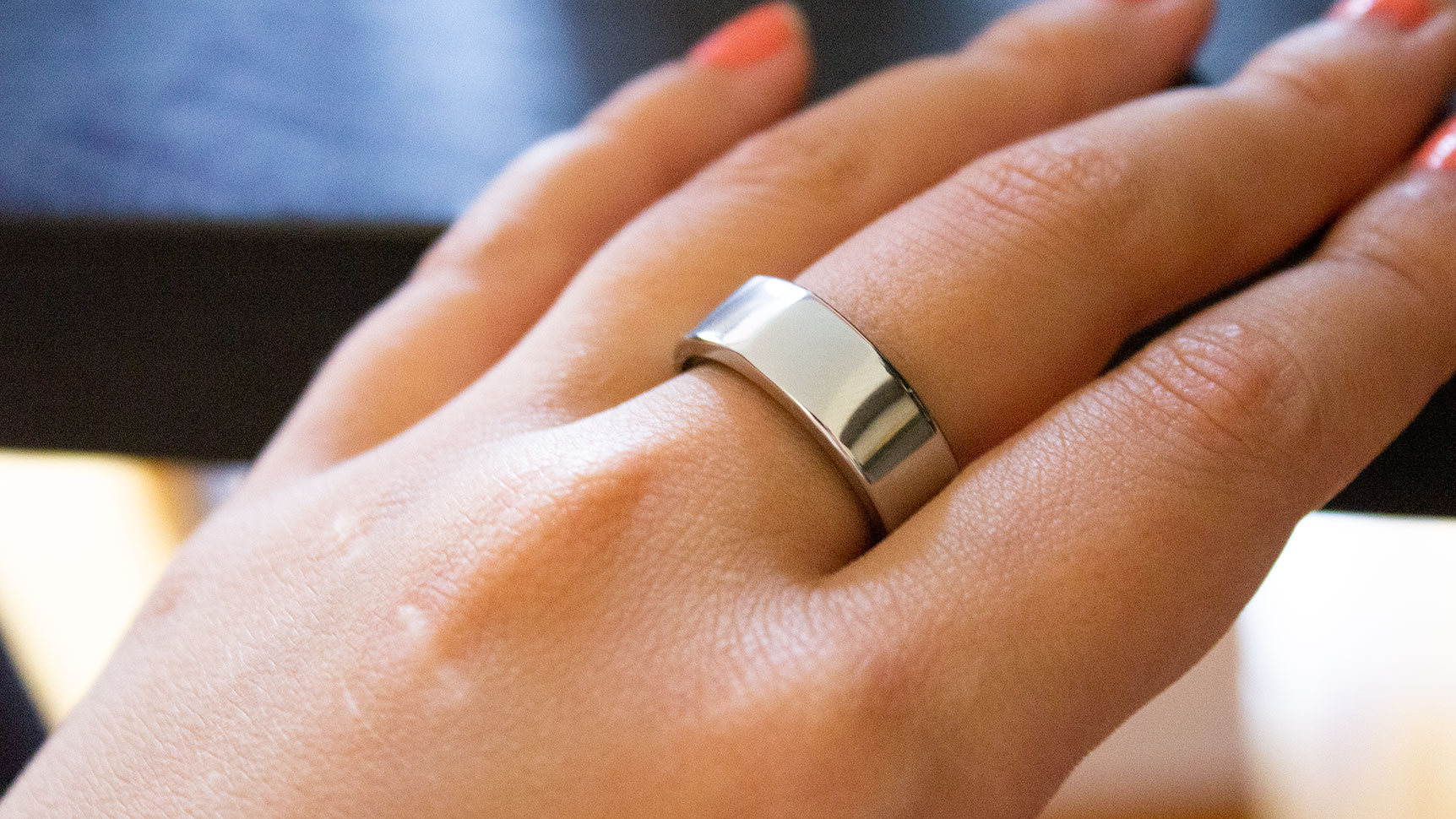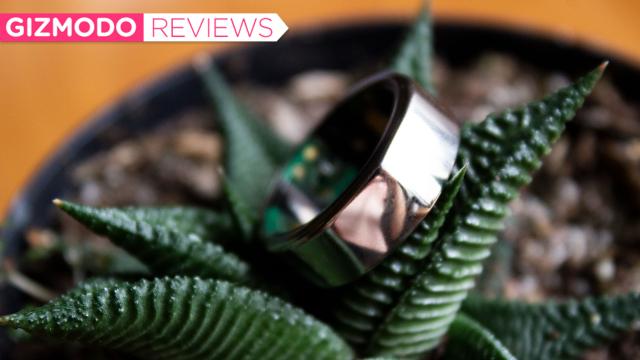Not long after the pandemic was in full swing, wearables makers big and small began to explore whether their devices could help researchers detect covid-19. While the range of wearables included well-known brands like Apple, Fitbit, and Garmin, the one that’s gotten the most attention is the Oura Ring.
The hype around the Oura Ring isn’t new. It’s been in the news before because of some high profile users, including Twitter CEO Jack Dorsey and Prince Harry. Part of the reason the ring is blowing up now is that it was chosen by the NBA and WNBA to help monitor athletes as part of their reopening plans. That’s led to a lot of discourse — not only about the blatant inequity of wealthy sports organisations buying more than 2,000 of these $US300 ($420) rings when the general public still can’t get regular testing but also about what this sort of technology can actually do.
Researchers at West Virginia University Rockefeller Neuroscience Institute released preliminary research indicating the Oura Ring could detect illness up to three days before symptoms appeared with a 90 per cent accuracy rate. It was promising research but it also led to misleading headlines and tweets that implied this gadget could accurately predict covid-19. Adding fuel to that, Oura Ring users have shared stories online of how poor scores led them to get tested for the novel coronavirus.

Oura Ring
What is it?
A smart ring that tracks sleep that's gotten a lot of buzz since the pandemic
Price
$US300 ($420); There's a fancier 'stealth' version for $US400 ($560) and one with diamonds for $US1,000 ($1,399)
Like
Super comfy to wear 24/7. Long battery life. Nice app.
No Like
Kinda expensive as it mainly tracks sleep and recovery. Readiness score was wonky in testing.
Long story short: It can’t diagnose covid-19 and we won’t know for a while whether any wearable can reliably predict it. The Oura Ring might detect physiological changes that correlate to the onset of illness, but that doesn’t mean it knows if you’re sick from covid-19 or the flu or the common cold. I’ll say this until I’m blue in the face: This isn’t a medical device cleared by the FDA for diagnostic purposes. Oura isn’t even claiming that it is. Whatever you might read in headlines, the Oura Ring is first and foremost intended to be a sleep tracker. With that in mind, I was curious to see how well it stacked up compared to other fitness trackers and whether it could possibly live up to the hype.
Unboxing the ring, it looks like… a ring. There are two styles, Heritage and Balance, and both come in either silver or black. Heritage has a flatter top, while Balance has a more pointed one. (My review unit is the Balance in Silver.)
If you’re richer than sin, there’s also a fancy-pants Balance with diamonds for $US1,000 ($1,399), or a “stealth” Heritage for $US400 ($560). (As far as I can tell, stealth is just a matte black finish.) The ring is made out of an “ultra-lightweight titanium” with a scratch-resistant coating. What can I say? It’s a ring and it’s not fugly. I wouldn’t call it chic — it’s more utilitarian than anything and a tad thicc on my finger, but this type of inoffensive design is actually pretty good for something that’s meant to be worn 24/7.
The main thing is if you look inside the band, you can see three protruding sensors and a circuit board. Those sensors are an infrared optical heart rate sensor (which also measures respiration), a body temperature sensor, and a 3D accelerometer. A thing to note here is that Oura claims its optical heart rate sensor, or PPG sensor, delivers more accurate readings than a wrist-based wearable; it says that’s because infrared penetrates deeper than the typical green-light PPG sensor.

While this is a smart ring, it’s not going to do much more than track sleep. Other smart rings such as the Motiv Ring (which is no longer available) or even Circular, a smart ring under development, offer a wider range of features and often bill themselves as a type of fitness tracker. On the Oura Ring, there is limited fitness tracking, and zero call or text notifications, alarms, or wonky 2FA features. Functionally, this ring has more in common with Whoop, a recovery-focused wearable I tested at the beginning of the pandemic.
What that means is 99 per cent of the time, it feels like you’re just wearing a ring — albeit one that you have to charge about once a week. (You get an estimated 7 days of battery, which corresponds to what I got in testing.) Most of the time, I forgot I was wearing it. It’s more comfortable than my engagement ring (though not as pretty) and is hardy enough that I don’t have to worry the tech will be wrecked by daily tasks like washing the dishes, slathering Rihanna’s Fenty Skin lotion into my face, or sweaty exercise. Any notifications you might get, such as reminders to move or an alert that your ring has finished charging, are delivered via your phone.

The “smart” aspect of the Oura Ring really just comes via syncing your data and reviewing your metrics in the companion app. Each morning you’re greeted by a readiness score, sleep score, and activity score. The readiness score is based on your resting heart rate, heart rate variability, body temperature, and respiratory rate during sleep. There are also other metrics thrown in there like recovery index — how long it takes your resting heart rate to stabilise at night — as well as your previous day’s activities, sleep duration, and sleep consistency.
Likewise, your sleep score is also derived from how many hours you slept, how efficiently you slept, time spent in various sleep stages, how long it took you to fall asleep, how restful your sleep was, and sleep timing. These are calculated based on your various physiological metrics but are more esoteric. For instance, sleep timing is apparently defined as being optimal when “the midpoint of your sleep falls between midnight and 3 am.” This is presented as a way of measuring whether your circadian rhythms are in tune or out of whack but it’s not an easily understood or common metric featured on most sleep trackers.
Lastly, the activity score is a mix of your daily step count and other things like, do you move every hour? How often do you meet your daily goals? How much time are you inactive per day? How often do you train and how hard do you train? Are you recovered? It seems Oura’s algorithm is based partly on how many Metabolic Equivalent (MET) minutes you get during the previous 3-4 days. What are METs? In simplest terms, it’s a measure of your working metabolic rate relative to your resting one. Specifically, one MET is roughly 3.5 milliliters of oxygen per kilogram of body weight per minute. If you frequent the gym, you might’ve seen this on exercise equipment but lord knows this is kind of obtuse for the average person who just wants to know whether they’re getting the right amount of activity.
For me, I found the readiness, sleep, and activity scores to be mixed indicators of my health. All the scores are based on a scale of 1 to 100, with 100 being super great, and a score above 70 being good. Generally, my sleep scores tended to correspond well to my quality of sleep. Whenever I had a lousy night of sleep because my elderly dog decided to vomit on my leg, or the arsehole cat decided to whack me awake with his tail at 3 am, the Oura Ring accurately noted those disturbances. I also found the activity score accurately reflected my training schedule and appropriately shamed me on days where I was chained to my desk for 10 hours. (It helps that you can sync the Oura app with Apple Health, so your activities are automatically imported.) The readiness score, however, was where I found things a bit wonky.

While testing the Samsung Galaxy Watch 3‘s workout video streaming feature, I made the egregious mistake of doing about 200 squats and an absurd number of burpees in about 25 minutes. The next day I was unable to walk as my glutes decided they were absolutely done with my bullshit. However, Oura gave me a readiness score of 89 and suggested that day was a good one to go ham on training. In reality, I was unable to walk to the kitchen without waddling like a penguin. On another day, I had an ok-ish score of 79 and it told me to take it easy when actually I felt super rested and ran my best 5 km time in months. This was something I came across when testing Whoop as well. Oura’s graphs and app are definitely more streamlined and easier to understand, but at least with Whoop’s graphs, I could see that my delayed-onset muscle soreness was reflected in my low heart rate variation scores. I wasn’t quite as able to do that with the Oura Ring.
When I chatted with Oura CEO Harpreet Rai over the phone, he told me my scores would get more accurate the longer I wore the Oura Ring. That makes sense. The more data you have, the more accurate and personalised your results will be. It’s possible that my readiness score will more accurately reflect my body’s state over time.
One aspect I did like was the Oura Ring app’s “Moments” feature. The “Moments” are basically guided (or unguided) breathing meditations. You can select various soundscapes, and during the sessions, you can opt for the Oura Ring to “spot check” your metrics. I’m not big on meditation, but I found a five-minute break that I could initiate whenever I felt agitated was preferable to my Apple Watch’s annoying-as-hell breathing reminders. That it gave me data afterward was a nice treat.
As a sleep tracker, I think the Oura Ring does an excellent job. Actually, I’d say it’s one of the best ones out there. I can’t stress enough how much you don’t notice it on your finger unless you happen to be looking straight at it. That, plus the long battery life, makes for a tracker that’s well-suited to sleep tracking. I also appreciate that the Oura Ring isn’t promising to do more than its tech can handle. A big problem I had with the Motiv Ring and the Motiv Ring 2 was that the activity tracking was way off because the algorithm did not account for how a finger-based wearable might differ from a wrist-based one. Also, fancier features like 2FA simply did not work when I tested them.

Again, I say that it’s a good sleep tracker. Any success you might have detecting bodily changes or ailments is a result of learning your baseline, not some technical wizardry. If you track your metrics over a long period of time, then yes — you will notice when something is off. Anecdotally, self-quantifying was how I found out I have polycystic ovary syndrome. But it also took me months to notice something was off in my data, and then another two years before I was able to get a correct diagnosis from a medical professional.
If you buy the Oura Ring, enroll in the relevant covid-19 studies, and then expect you’ll somehow quickly get alerts before you’ve fallen ill — you might want to recalibrate your expectations. You could absolutely notice an anomaly in your data after a few weeks (more likely months) and out of an abundance of caution, get tested. But that’s the extent of it. There’s no hard evidence that researchers can differentiate between infectious diseases via wearables yet.
The question is whether you’re down to fork over $US300 ($420) or more for a smart ring that is laser-focused on sleep and recovery. By comparison, Whoop’s hardware is free but it saddles you with a $US30 ($42) monthly subscription and it’s not quite as comfortable. In terms of price, the Oura Ring would be cheaper if you intend to stick with it for at least 11 months. However, many basic smartwatches and fitness trackers are not only less expensive, but they can also more accurately track your workouts and overall health, as well as deliver notifications. If you want more than just sleep tracking, one of these is a better use of your money. They won’t be quite as detailed with regard to recovery or sleep, but if sleep is not a high priority, then you shouldn’t be looking at the Oura Ring to begin with.
If you are looking for a deep dive into sleep and recovery, then the Oura Ring is one of the best wearables out there right now — so long as you take the hype around it with a grain of salt.
README
- IT DOES NOT DIAGNOSE COVID-19 THANK YOU FOR ATTENDING MY TED TALK.
- Measures heart rate, body temperature, and movement to generate readiness, sleep, and activity scores that measure your recovery.
- Very comfortable! Not ugly!
- Kind of expensive at $US300 ($420) for a smart ring that only tracks sleep.
- Scores are mostly accurate but not always reflective of how you might feel.
